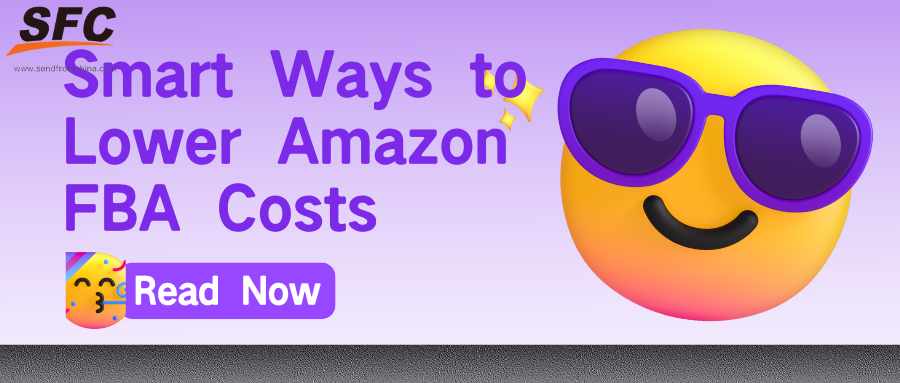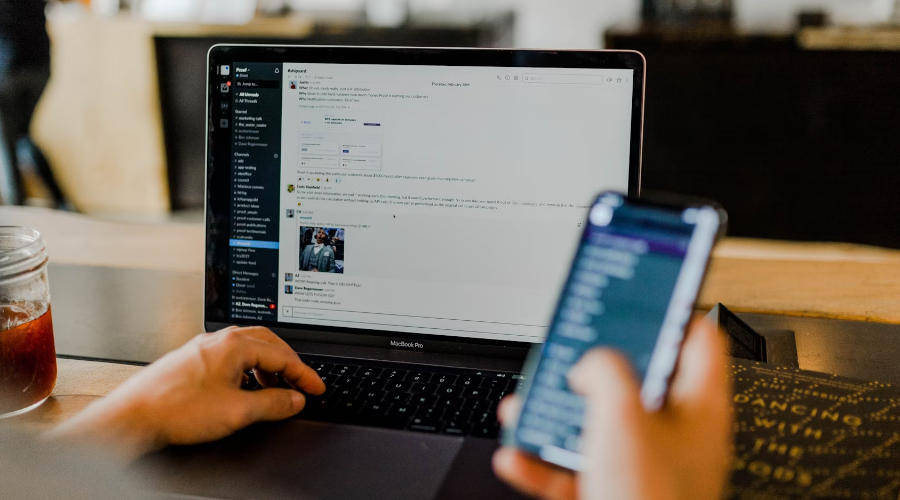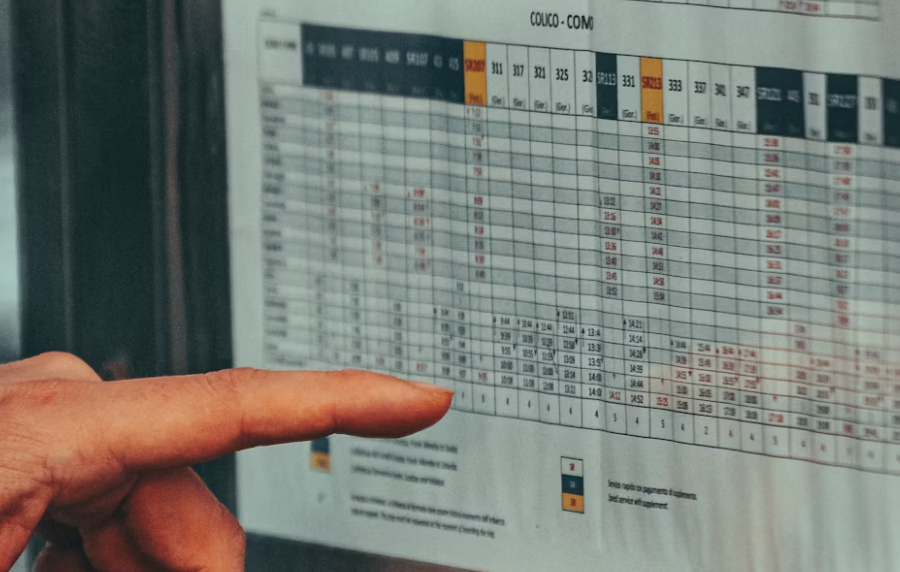Table of Contents
Get Custom eCommerce Fulfillment Service
Book a Meeting
Amazon FBA Fees Too High? Smart Ways to Lower Costs and Protect Profits
Time: Oct 24,2025 Author: SFC Source: www.sendfromchina.com
Running a successful business on Amazon can be highly rewarding—but only if you understand and control your costs. As a seller, you may focus on product sourcing, pricing, marketing, and the workflow of fulfilment—but without a clear grasp of the many fees Amazon imposes, profit margins can quietly shrink. At SendFromChina, we’ve helped many Amazon sellers streamline logistics and cost structures from China to Amazon’s fulfilment network, and one recurring theme is: fees win if you don’t fight them.

This article walks you through exactly what Amazon seller fees are, how they break down, how they impact your bottom line—and practical steps you can take now to minimise them.
1. What are Amazon seller fees?
In simple terms, Amazon seller fees are the costs charged by Amazon to enable you to list, sell and fulfil your products on their marketplace. They aren’t optional add-ons you ignore—they are structural costs built into every transaction (and in many cases you won’t see until you review your monthly statements). Understanding them is vital because they directly reduce your gross revenue and thus your profit margin.
Put another way: if you sell a product for $100, the money you see in your bank account will be less than that because Amazon has already taken certain “costs” for themselves. Some of these are obvious (referral fees, subscription fees) and some are less so (storage, removals, long-term inventory). Knowing what Amazon charges gives you power to plan your pricing, margins, and fulfillment strategy accordingly.
2. Types of Amazon seller fees
Here are the core types of fees you’ll face when selling on Amazon, along with short explanations.

Account/subscription fees
With Amazon’s “Individual” plan you pay US $0.99 per item sold (in the US marketplace).
With the “Professional” plan you pay US $39.99 per month (in the US) regardless of items sold. Picking the right plan matters: if you sell fewer than ~40 items per month, the Individual plan may make sense; if you sell more, the Professional plan often reduces per-item cost.Referral fees (commissions)
These are charged for each item sold, typically a percentage of the total sales price (which may include shipping in some cases). According to multiple sources: most categories fall in the 8 %-15 % range, though some go as low as 6 % and as high as 45 %. For example, one summary says “ranges from 8%–45% of each product’s selling price (most sellers pay about 15%).”
Fulfilment and shipping fees
If you’re using Amazon’s fulfilment services (Fulfilment by Amazon (FBA)) or shipping yourself (FBM/merchant-fulfilled), you’ll incur picking/packing/shipping costs, storage costs, and possibly returns/handling costs. Amazon states: “fulfilment and storage costs, which depend on product size and weight.”
Storage and long-term inventory fees
Inventory that sits in Amazon’s warehouses costs monthly storage fees (charged per cubic foot) and may incur additional “long-term storage” or aged inventory surcharges if unsold after ~365 days or more.
Additional/hidden fees and miscellaneous fees
These include closing fees (for media categories), refund administration fees, high-volume listing fees, and other special charges such as removal/disposal of inventory, unplanned service fees, etc.
3. Understanding Amazon’s fulfillment models and their costs
How you fulfil orders on Amazon has a huge influence on your cost structure—and hence your margin.

Fulfilment models
FBM (Fulfilled by Merchant): You list products on Amazon but ship them yourself (or via your logistic partner). You pay shipping, pick/pack, customer service, returns handling yourself, but avoid some of Amazon’s FBA fees.FBA (Fulfilled by Amazon): You send inventory to Amazon’s fulfilment centres; Amazon handles pick/pack/ship, Prime shipping, customer service and returns. You pay Amazon for those services plus storage and other related fees.
SFP (Seller Fulfilled Prime): You handle fulfilment yourself but meet Amazon’s Prime shipping standards to display the Prime badge; some additional fees apply.
Costs to understand
With FBA, fulfilment fees are based on size & weight. Amazon explains: “fulfilment costs: picking, packing and shipping orders… based on the product’s weight and dimensions.”Storage costs are seasonal: e.g., rates are higher in Oct–Dec. Amazon’s fee calculator shows you the difference.
With FBM you pay your own shipping cost plus whichever Amazon referral fees apply—and you need to account for returns and customer service cost.
With SFP, additional fees may kick in. For example, news reported that as of October 1, 2023 Amazon will charge 2% (or minimum $0.25) per item for Sellers Fulfilled Prime orders.
Practical comparison
Suppose you have a product that weighs 2 lbs, standard size. If you use FBA you might pay Amazon ~US$4-6 in fulfilment + maybe US$1 in monthly storage per unit (depending on how fast you turn it). If you do FBM you might figure your shipping cost (say US$3) plus packaging & labour, but you may have slower shipping and potentially less access to Prime customers. A key decision is: do the FBA benefits (Prime badge, Amazon handles logistics & returns) offset the extra cost for your product margin?
4. Hidden Amazon fees are eating into your profits
Many sellers only mentally budget for the obvious fees (subscription fee, referral fee) and forget the “silent drains” on margin. Here are some of the hidden charges that can sneak up on you:
Long-term storage fees: Inventory sitting unsold for 181+ days (or 365+ in some regions) triggers extra charges. Buying inventory cheaply isn’t enough if it stays in Amazon’s warehouse for six months or more.
Removal or disposal fees: If you remove inventory (to send it back or dispose of it) Amazon charges per-item removal or disposal fees. If you don’t move inventory, these add up.
Unplanned service fees / labelling / prep fees: If your inbound shipments don’t comply with Amazon’s rules (wrong labels, missing prep) Amazon may charge extra to label, prep, or correct—costs which you might implicitly absorb.
High-volume listing fees: If you have a very large number of active ASINs and many don’t sell, Amazon may charge small monthly fees (e.g., US$0.005 per listing) for non-media listings beyond 100,000 SKUs.
Refund administration fees: When a customer returns a product you have to refund, Amazon might refund part of the referral fee but deduct a fee (lesser of $5 or 20% of the referral fee).
Shipping cost variances / inbound placement fees: Amazon’s inbound placement service (when your inventory is sent to multiple fulfilment centres) may include extra fees depending on splits and region.
Returns processing fee (for FBA): Amazon sometimes charges for processing returns (especially for certain categories).
These fees often don’t get full attention when setting pricing. The result? A product that appears profitable on paper suddenly yields much lower net profit once all fees are deducted.
5. How Amazon fees impact your bottom line
Let’s bring this into a real-world sketch so you can see how it eats into profit margins.

Example scenario
You source a product in China for US$5 (cost of goods). You sell it on Amazon US for US$20 (including shipping). You use FBA to fulfil.
Outgoings might include
Referral fee: assume 15% of US$20 = US$3.00 (just an example).
FBA fulfilment fee: US$3.50 (for a small standard item).
Monthly storage and amortised inbound cost: say US$0.50 per unit.
Subscription cost amortised (if you’re selling many units, the US$39.99/month becomes maybe US$0.50 per unit).
Miscellaneous/hidden costs: say US$0.20 per unit (returns, removals, etc.).
Total cost before your product cost = US$3.00 + 3.50 + 0.50 + 0.50 + 0.20 = US$7.70
Add product cost (US$5) = US$12.70
Your revenue is US$20 → Net before tax etc = US$20 – US$12.70 = US$7.30
Your net margin = 7.30/20 = 36.5%.
Now imagine you had ignored storage/long-term fees or assumed fulfilment fee US$2 instead of US$3.50. That margin might look like 50% but in reality it's lower. Or imagine your inventory sits 6 months causing an extra US$1/unit cost—now your net margin falls further. Over many units the difference is significant.
When you multiply by thousands of units per month, low margins mean less flexibility to run promotions, pay for ads, or buffer against price changes and rising costs. In short: fees determine whether you’re thriving or scrambling.
6. How to reduce your Amazon Seller fees
While you can’t eliminate Amazon’s core fees (you’ll always pay a referral fee, for example), there are smart strategies you can adopt to reduce overall cost and protect your margin.

Choose the right selling plan
If you sell fewer than ~40 items per month (in the US), the Individual plan (US$0.99/item) may be cheaper than the Professional plan (US$39.99/month). Once you exceed that threshold, switch to Professional so your per-item amortised cost drops.
Pick products with favourable categories and margin potential
Referral fees vary by category. If your product falls into a category where the fee is lower (for example ~8% vs ~15%), you’ll start with a margin advantage. Review Amazon’s fee table carefully.
Optimise fulfilment method
For small, fast-moving, high-margin products, FBA often makes sense (Prime badge, less hassle). For large, heavy, or slow-moving products, FBM or a third-party logistics (3PL) partner might cost less overall. Use Amazon’s Revenue/Fee Calculator tool to compare FBA vs FBM for each SKU.Reduce size & weight of products
Since FBA fulfilment & storage fees increase with size/weight, focus on lightweight, compact products (when feasible) so each unit costs less to fulfil. Amazon themselves advise this.
Manage inventory turnover & avoid long-term storage fees
Move inventory quickly. Low sell-through rates mean higher storage costs and possibly surcharges. Use forecasting to avoid over-stocking. Remove or liquidate slow-moving SKUs before surcharges kick in.
Use prep/shipping optimisation
Ensure your inbound shipments to Amazon are efficient: use fewer smaller shipments, pack correctly, avoid label errors so you avoid unplanned service fees.
Leverage logistics partners (especially for China-based sellers)
As a China-based seller, using a trusted 3PL partner like SendFromChina (that knows how to deliver to Amazon’s fulfilment centres, handle China-USA shipping, customs, etc) can reduce inbound freight and handling cost—reducing the invisible cost per unit before Amazon even charges you.
Incorporate fee cost into pricing & margins
When you set your selling price, build in: product cost + inbound freight/logistics + Amazon fees + your desired margin. If you simply base price on product cost + margin, you might miss the fee component and end with lower margin than planned.
Monitor returns and refund fees
Returns eat into profits: if your category sees many returns or you run promotions that lead to returns, budget for the refund administration fees and the lost margin. Try to reduce defects and returns by good product descriptions, high-quality images and reliable shipping.
Negotiate or work around high-fee categories
If your product sits in a high-referral-fee category (say 20% or more), consider launching a private label brand, bundling with other items (to raise average order value), or migrating to a less penalised category if feasible.
7. Tips for planning around future Amazon fee changes
Amazon frequently adjusts its fee schedules, storage rates, shipping requirements, and terms of service. Smart sellers stay ahead of these changes.

Subscribe to Amazon Seller Central announcements
Amazon posts updates on fee changes (for US, EU, other marketplaces). Keep a calendar reminder to review the schedule every quarter.
Run scenario modelling
For each major SKU, ask: “What happens if the referral fee goes up by 1 %? What if storage fees double during peak season? What if fulfilment fee increases by US$0.50?” Build buffer into your margin.
Maintain flexible pricing
Don’t lock all products into low margins. Leave wiggle room so you can adjust price if Amazon fees or fulfilment costs rise.
Track your fee history and cost per unit over time
Use tools or spreadsheets to monitor per-unit fee cost (including storage, fulfilment, removals). Identify trends (e.g., units becoming more costly to store) and act early.
Diversify fulfilment geography
If you sell in multiple marketplaces (US, EU, Asia), note that local fee structures differ. If one region becomes more expensive, you may shift inventory or focus to other markets.
Use logistics partners to anticipate inbound cost changes
Because for classically China-based sellers (like your brand SendFromChina), shipping from China to Amazon warehouses may see freight or customs cost increases. Forward-planning inbound shipments (e.g., sending earlier) can freeze some cost components before they rise.
Build a contingency product mix
Have some SKUs with high margin/resilient to fee increases and some with lower margin (but high volume). That way if fees increase you still have margin buffer in at least one segment.
8. How SFC helps Amazon sellers control costs
At SendFromChina, headquartered in China and specialising in third-party logistics (3PL) targeted at Amazon sellers, we offer several cost-control advantages.
Inbound freight expertise: We handle ocean/air freight from China to USA (and other Amazon fulfilment hubs) at competitive rates, helping reduce your landed cost per unit before Amazon’s fees apply.
Optimised packing & shipping to Amazon FBA: We know Amazon’s inbound labelling, prep, carton requirements and can minimise unplanned service fees (e.g., re-labelling, extra handling) that Amazon may charge.
Inventory staging & FIFO from China warehouse: We help align your production, shipping and Amazon fulfilment schedule to avoid excess inventory sitting too long in Amazon’s warehouse (thus reducing storage or long-term fees).
Cost-of-goods plus full cost visibility: We provide transparent logistics cost breakdowns so that when you price your Amazon listing you know your total landed cost + Amazon fees + margin buffer—not just product cost.
Multi-marketplace support: If you sell on US, EU or other Amazon marketplaces, we help you manage the logistics for each, so you can compare the cost structure and choose the most profitable routes.
Consulting on fulfilment method: We advise whether FBA or FBM makes best sense for your SKU (size/weight/sales velocity) and help you implement the leaner option.
9. Conclusion
Selling on Amazon is a tremendous opportunity—but only if you stay vigilant about costs. The various fees Amazon charges—from subscription and referral fees through fulfilment, storage and hidden surcharges—can quietly erode your margin if you don’t build them into your business model.
10. FAQs
Q1: What is the cheapest way to sell on Amazon for small-volume sellers?
A1: If you sell fewer than ~40 items per month (US marketplace), the Individual plan ($0.99/item) may cost less than the flat $39.99/month Professional plan. But you’ll miss certain tools and may face higher per-unit costs.Q2: How often does Amazon change its fee structure?
A2: Amazon revises fees periodically (often annually or bi-annually) and sometimes introduces new surcharges. It’s best practice to review your fee schedule each quarter or when Amazon posts an announcement.Q3: Can I avoid Amazon fulfilment fees altogether by using FBM?
A3: You can avoid FBA fulfilment fees if you fulfil orders yourself (FBM). But you’ll still pay referral fees and account fees, and you’ll have to cover shipping, packaging, returns and customer service. So it’s a trade-off.Q4: How much do hidden fees really cost?
A4: Hidden fees (storage, long-term inventory, unplanned service, removals) can easily add US$0.20-1+ per unit (or more for heavy/slow SKUs). Over thousands of units this becomes significant and must be factored into your margin.Q5: How can SendFromChina help me save money?
A5: By providing cost-effective freight/shipping from China, optimised packing for Amazon inbound, inventory staging and logistics consulting, SendFromChina helps reduce your landed cost per unit and improves your margin before Amazon fees, enabling you to better absorb or offset those fees. Post Views:15
Post Views:15
Copyright statement: The copyright of this article belongs to the original author. Please indicate the source for reprinting.
Previous Post
Next Post
How 3PLs Take Orders for Amazon FBA: Best 3PL Solutions for Sellers
TAGS
Hot Research
Recent News
Get Custom eCommerce Fulfillment Service
Book a Meeting
Get a Custom China Fulfillment Solution with FREE Storage for 30 Days
 Want to know about our services, fees or receive a custom quote?
Want to know about our services, fees or receive a custom quote?
 Please fill out the form on the right and we will get back to you within a business day.
Please fill out the form on the right and we will get back to you within a business day.
 The more information you provide, the better our initial response
will be.
The more information you provide, the better our initial response
will be.





 TAGS:
TAGS: